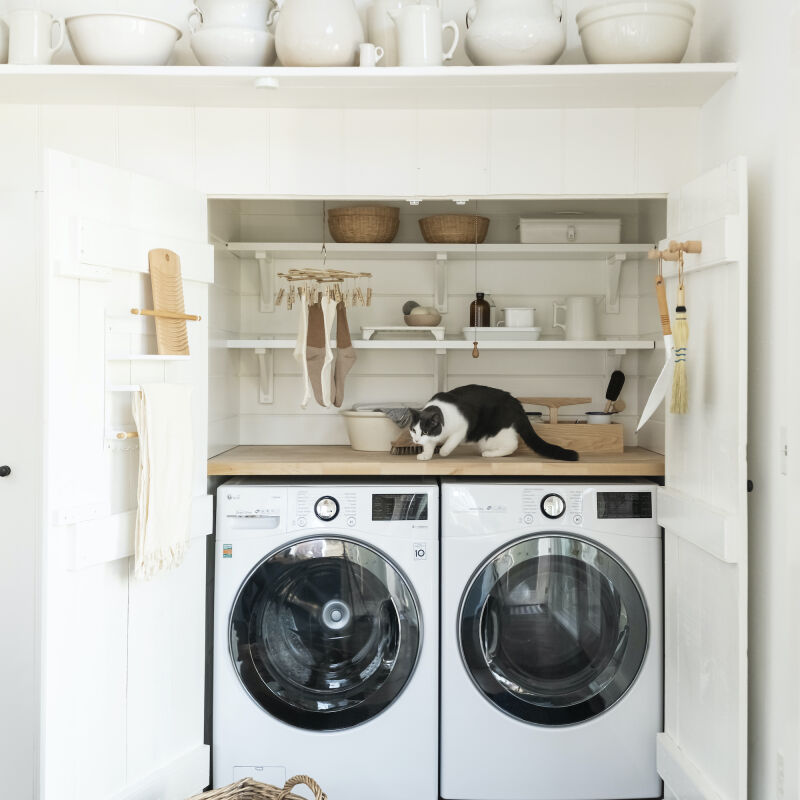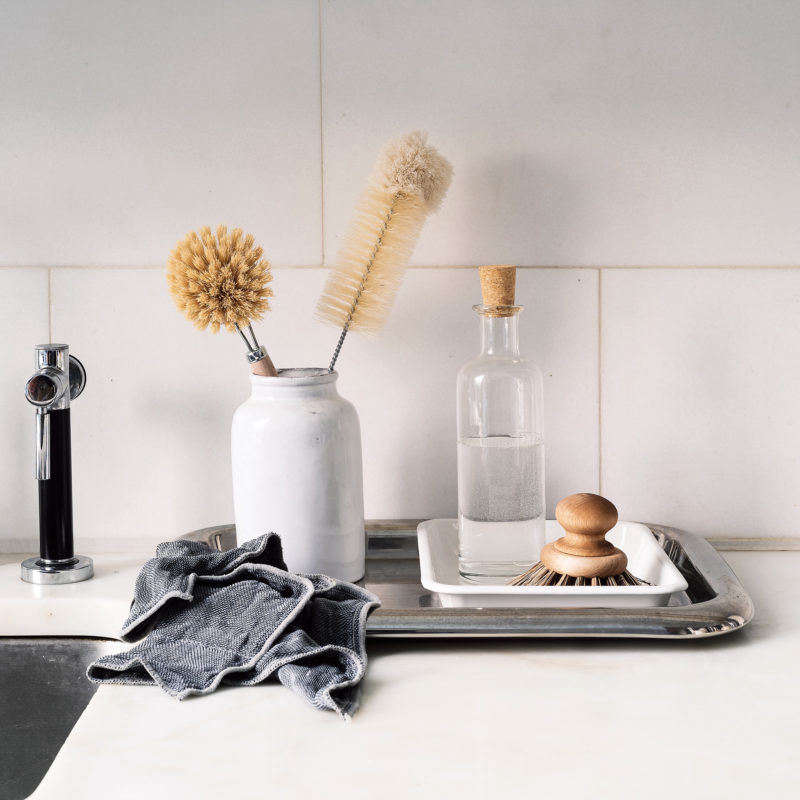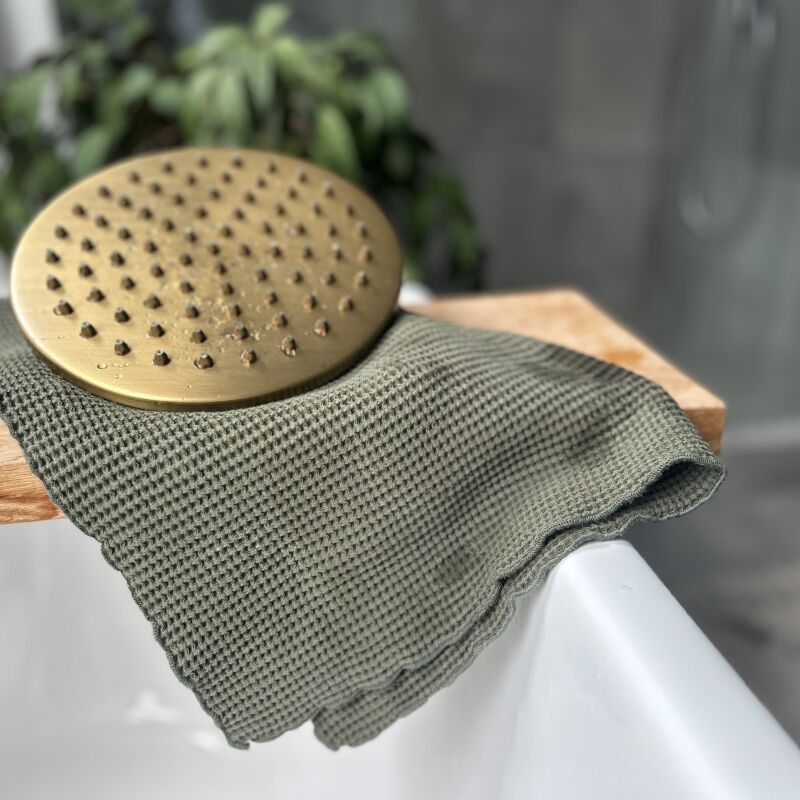I’ve long accepted that some of the things I love most about summer—ice cream, berries, hot dogs with ketchup—often take a quick turn into stain disaster territory. But last summer started—immediately—with my worst stain yet.
It was Memorial Day weekend, and my boyfriend and I were happily settling into a mini staycation in our New York City neighborhood. After coffee, we walked to the grocery store to stock up on start-of-summer essentials: watermelon, lemonade fixings, ingredients for haddock chowder, a bunch of peonies, and a bag of frozen Maine blueberries. (I was going to make a pie.) As we walked home in the sun I was looking forward to lunch: a tomato sandwich and some potato chips.
When we got home, we put our cloth grocery bags on our (white) couch and started unpacking. After a few trips back and forth to the fridge, I took out the bag of frozen blueberries, and a rush of purple liquid dripped all over my hands and onto the floor. Dreading what I’d find, I picked up the grocery bag and, yes, underneath was a deep, dark purple stain the size of a grapefruit—all over a white sheepskin throw.

The good news was that the thick sheepskin prevented the blueberry juice from going through to the couch. (A few inches to the left and we would’ve had a bigger problem.) The bad news was that the sheepskin I’d saved up for and brought back from Stockholm in January now looked like the sheep had gotten a particularly rebellious dye job. Fortunately, the exterior of wool fibers is particularly water-resistant (which I remembered from writing 10 Things Nobody Tells You About the Benefits of Wool), so I knew if I worked quickly and with a great amount of care the stain would, hopefully, come at least partway out. I put everything else down (key to stain treatment: act fast), spread the sheepskin on the floor, and Googled “how to get out berry stains.”
As it turns out, the solution, conveniently, is the same ingredient you’d add to make a berry pie: fresh lemon juice. Apparently, the acidity of the lemon juice helps break down the berry juice.
We always have a bowl of half-used lemons in our fridge, from squeezing into seltzers or using the rind for baking, and they were about to come in handy. I grabbed the bowl and, following the directions from experts on Today.com for getting berry stains out of carpets, I got to work.
Here’s what I did… and what to do if something similar happens to you.

Materials
- Fresh lemon juice (for time’s sake, a lemon cut in half, or even the lemon juice that comes in those little yellow bottles, is perfect)
- A spoonful of dish soap mixed with cold water, or detergent
- Plenty of plain white paper towels
- Plain cold water
Sheepskin/Carpet Method
1. Pre-treatment: Lift the juice out.
To start, I took a clean white paper towel and gently used it to pinch/twist each section of the wool, pulling as much of the berry juice up and out of the material as possible without squeezing it further into the fibers, and working from the outside of the stain in to avoid spreading. I kept moving the paper towel as I went, using new, clean sections, since the berry stain was starting to transfer onto it.

2. Lemon soak.
Next, I squeezed lemon juice onto the stain—not drowning it completely (I didn’t want a sticky sheepskin either) but enough that the stain was saturated in juice. Then, I walked away for five minutes—part of stain-removal success is letting the treatment do its thing—and tried to take deep breaths.

3. Dab the lemon out.
After letting the juice sit for five minutes, I got another clean paper towel and repeated the pinching/twisting motion, continuously moving to new sections of the paper towel. This up-and-away twist technique worked perfectly on the individual tufts of wool, and the image is what you want to achieve: pulling the liquid out. Slowly, I started to see more and more of the berry juice on the paper towel and less on the sheepskin—though it was definitely still there, just a couple of shades lighter. I started to accept the fact that I might be dealing with a permanent bright purple splotch.
But, I repeated the juice + leave it + twist technique one more time, since I could see it working.

4. Dish soap time.
Next, I dribbled the soapy water onto the stain (again, not drowning it, but making sure it was saturated). I didn’t want to pour the soap onto the wool, but I also didn’t want to dab it on for fear that any downward motions or unnecessary touching of the stain would push it further into the sheepskin (the first rule of stain removal: never push down any more than you have to; always up and away), so I sort of dripped it on with my fingers. Then, again, I let it sit for five minutes while I cleaned the berry juice off the kitchen floor.
5. Dab the soap out.
After five minutes, I returned and—you guessed it—repeated the paper towel technique. I had thought that the lemon juice had gotten as much of the stain out as possible, and that the dish soap would just clean up the sticky residue. But the combo of the lemon juice and dish soap was now transferring lots of purple liquid onto the paper towel. I could not believe my eyes: The stain was almost out.
I repeated the dish soap technique in a few spots that still had tinges of purple.

6. Rinse/wash.
Last but not least, I soaked a paper towel in cold water, rung it out a bit, and dabbed gently at the sheepskin, careful to get as much lemon/soap out as possible. (My sheepskin couldn’t go in the washer; the same applies to something like a carpet.) This was the final step of drawing any last twinges of purple out.
7. Dry.
Once I was done rinsing, I fluffed the wool a little with my fingers and left the sheepskin to dry in the sun.
I’m happy—and fairly astonished—to report that the stain came out 100 percent: You can’t tell at all that the throw once had a big splotch of purple on it.

If You Stain Something Besides a Sheepskin
If you spill berry juice on something besides a sheepskin or a rug, the premise of this method is the same, with a few tweaks:
- First, use the edge of a butter knife of credit card to scoop up any berry bits (or use a spoon to collect any pooled juice that hasn’t soaked in). Then dab gently with a white paper towel to start the transfer process. (If you can, run some cold water through the stain from the underside of the cloth, so that the water starts to push the stain out, not further into the fabric.)
- Next, it’s time for a squirt of lemon juice. (If you’re out and about, buy a lemon at a market or ask for a slice from a bar or restaurant.) Squeeze some juice on, and maybe rub the lemon slice on it a bit. You can leave the lemon juice on longer than five minutes, especially if you’re out—some advise 30 minutes.
- Then, soap. You can use dish soap, like I did (good if you’re at a restaurant), but you could also use detergent.
- If the soiled item is machine-washable, now is the time to toss it in the wash, as normal. (If it’s dry-clean only, it’s high time to take it to your local cleaners.)
- When in doubt—if the material is delicate, like silk, or if you still see a stain—call in the pros.
The last step, no matter what the spill: Make a pie with the leftovers. Which is just what I did.
For more laundry and cleaning tips, head to our Domestic Science section. Plus, a few tricks that use ingredients you might already have around the house:
- Expert Advice: Editors’ Top 23 Cleaning Tips
- 3 DIY Cleaning Recipes for a Healthy, Happy Home
- DIY: Homemade Dish Soap





Have a Question or Comment About This Post?
Join the conversation